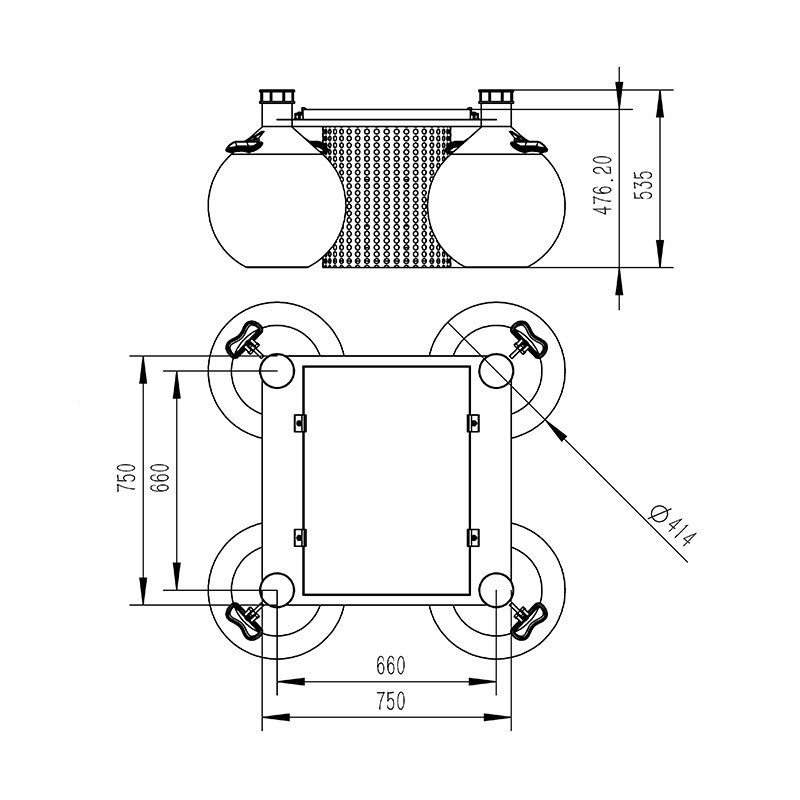Shandong Fengtu IOT Technology Co., Ltd
Sales Manager:Ms. Emily Wang
Cel,Whatsapp,Wechat:+86 15898932201
Email:info@fengtutec.com
Add:No. 155 Optoelectronic Industry Accelerator, Gaoxin District, Weifang, Shandong, China

Sales Manager:Ms. Emily Wang
Cel,Whatsapp,Wechat:+86 15898932201
Email:info@fengtutec.com
Add:No. 155 Optoelectronic Industry Accelerator, Gaoxin District, Weifang, Shandong, China

Model:FT-SFA
Brand:fengtu
1.Introduction to Buoy Water Monitoring
1. Buoy Water Monitoring is a small water quality monitoring system placed in waters by using sensor technology and combining buoy body, power supply system and data transmission equipment.Buoy Water MonitoringSFA is an unattended data collection system that integrates data collection, storage, transmission and management. It is an automatic hydrological monitoring and reporting system for industrial and agricultural production, tourism, urban environmental monitoring, geological disasters, flood control, water supply scheduling, power station reservoir water management, etc. The powerful host computer software can remotely observe real-time water and rainfall information, and has database, report, download and other functions. Users can also use the well-functioning meteorological software to further process and analyze the recorded data.
2. The water quality monitoring system consists of six parts: water quality sensor, data acquisition instrument, communication system, power supply system, overall support, and water quality monitoring platform. It can simultaneously monitor water temperature, pH, dissolved oxygen, conductivity, ammonia nitrogen, turbidity, COD, and other water quality factors. The data acquisition instrument has data acquisition, real-time clock, data timing storage, parameter setting, and standard 2G/4G (GPRS) communication functions.
2. Buoy Water Monitoring Product Features
1. Easy to deploy: various types of probes are highly integrated and easy to install; free cloud platform services are provided, and the system can be quickly put online;
2. Easy maintenance: After the equipment is installed, it can work automatically without manual supervision. The normal operation of the equipment can also be ensured by remote monitoring;
3. Easy to expand: sensor probes all use a unified communication protocol, which can quickly connect to the original equipment and quickly expand monitoring parameters;
4. Low power consumption: The device can run for a long time in a low power consumption state, increasing the convenience of device use;
5. Real-time: The data monitored by the equipment is transmitted to the cloud platform in real time to improve the timeliness of environmental data feedback.
3. Buoy Water Monitoring Technical Parameters
1. Subject parameters
| product name | describe |
| Buoy Water Monitoring | Real-time online monitoring of multiple parameters can be achieved. Battery charge monitoring can be realized. It can realize cloud platform data monitoring, data push, data storage and alarm functions; data wireless transmission function. The peak power consumption is 5W; the sensor power consumption is about 0.25W per sensor. Overall dimensions: 750mm*750mm*535mm. Float diameter 414mm Weight: 22kg |
| Collector data collection | Reliable operation, anti-interference, can integrate multiple RS485/MODBUS-RTU slave devices |
| Collector data output | 1 channel RS485/JSON protocol output |
| Battery | Lithium battery 12VDC, 20AH (default) |
| solar panel | 22.1V/50W (default) |
| Power supply capability | Customized selection; intermittent operation for more than 5 days on rainy days |
| Position indicator (optional) | Warning light;GPS positioning; |
| Monitoring Platform | Cloud platform; mobile phone/computer multi-terminal login |
| protecting mask | 304 stainless steel filter cartridge protective cover |
| Floating body | Diameter 414mm, spherical float * 4 engineering plastics |
2. Main parameters of optional sensors
| Serial number | sensor type | Measuring range | Measuring principle | measurement accuracy |
| 1 | temperature | 0~50℃ | High-precision digital sensor | ±0.3℃ |
| 2 | pH | 0~14 (ph) | Electrochemistry (Salt Bridge) | ±0.1PH |
| 3 | Dissolved oxygen | 0~20mg/L | Fluorescence lifetime method | ±2% |
| 4 | Conductivity | 0~5000uS/cm | Contact electrode method | ±1.5% |
| 5 | Turbidity | 0~40NTU (optional) | Scattered light method | ±1% |
| 6 | ORP | -1500mv~1500mv | Electrochemistry (Salt Bridge) | ±6mv |
| 7 | Ammonium ion | 1-100mg/l | Ion Selective Electrode Method | ±5mg |
We can customize appropriate testing solutions based on the actual situation of the customer and the technical indicators to be achieved.
Note: The sensor cannot be installed upside down or horizontally, but must be installed at an angle of at least 15 degrees.
The working environment of the above water quality sensors is 0-50℃, <0.3Mpa.
4. Buoy Water Monitoring Product Dimensions

5. Buoy Water Monitoring Equipment Installation Requirements
1. Stay away from high-power radio transmitters
2. Stay away from high-voltage transmission lines and microwave radio transmission channels
3. Try to be close to the data transmission network
4. Stay away from strong electromagnetic interference
Small weather station configuration listWindway Technology is the source manufacturer of small weather stations, whose configuration list is shown below.Miniature weather sensorSolar panelIP66 protective box (with LCD screen inside)2m vertical poleGround cageCloud platformUpper computer, Android APP...
Reservoir water level monitoring equipmentDid you know? There is not only one standard of reservoir water level, in order to complete the task of flood control and water storage, reservoirs have various reservoir water levels, such as normal storage level, dead water level, flood control limit level...
The quality of air directly affects people's lives and health. People can detect changes in air quality through their senses and take appropriate measures accordingly. Clean air helps to improve people's health and quality of life. Therefore, we should pay attention to the air quality proble...
Reservoir water level monitoring equipmentDid you know? There is not only one standard of reservoir water level, in order to complete the task of flood control and water storage, reservoirs have various reservoir water levels, such as normal storage level, dead water level, flood control limit level...